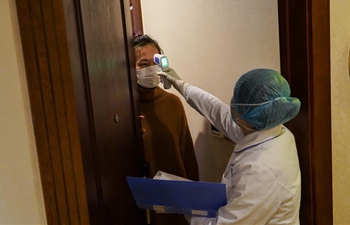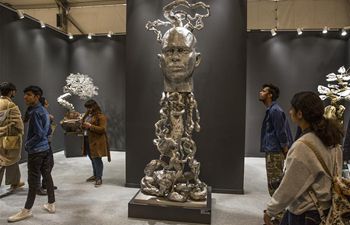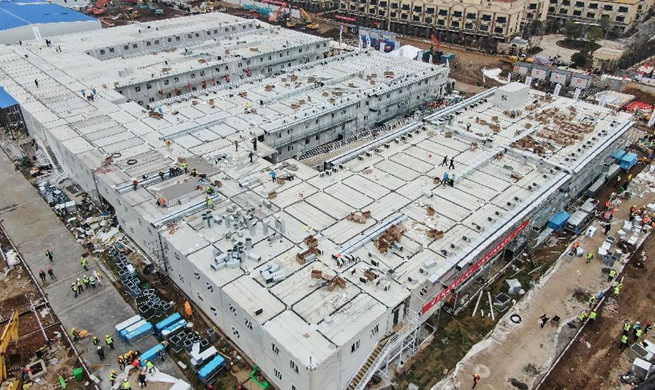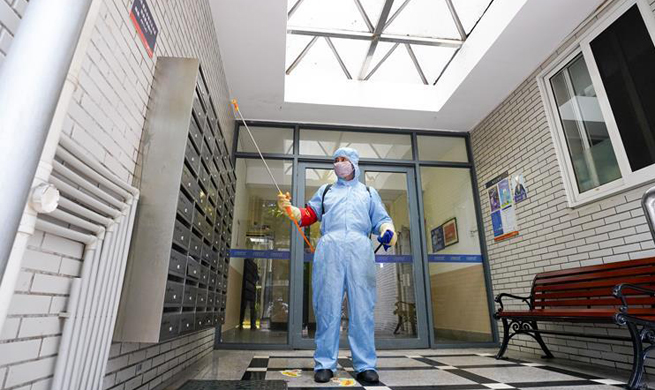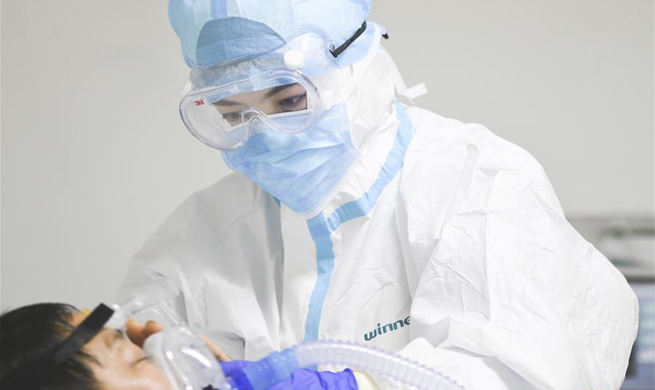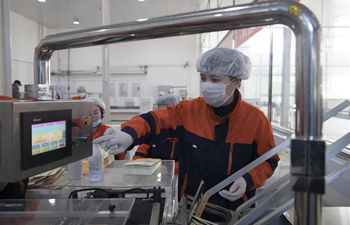WASHINGTON, Feb. 2 (Xinhua) -- Engineers and scientists developed a bionic "heart" that can test out artificial heart valves used to mimic real, healthy ones.
The study published in the latest edition of journal Science Robotics described the real biological heart whose tough muscle tissue has been replaced with a soft robotic matrix of artificial heart muscles, resembling bubble wrap.
The bionic "heart" mimics the pattern of the heart's natural muscle fibers in such a way that when the researchers remotely inflate the bubbles, they act together to squeeze and twist the inner heart, similar to the way a real, whole heart beats and pumps blood, according to the researchers from Massachusetts Institute of Technology (MIT) and other institutions.
Many prosthetic heart valves have issues such as leakage around the valve, and engineers must test them repeatedly, first in simple benchtop simulators, then in animal subjects, before reaching human trials.
With the new platform, engineers can fine-tune designs more quickly by testing on the biohybrid heart, thus significantly reducing the cost of cardiac device development.
The researchers first mapped the microscopic fiber orientations of a left ventricle's unfurled, two-dimensional muscle band, and then fabricated a matrix of artificial muscle fibers made from thin air tubes, each connected to a series of inflatable bubbles.
The soft matrix consists of two layers of silicone, with a water-soluble layer between them to prevent the layers from sticking, as well as two layers of laser-cut paper to ensure that the bubbles inflate in a specific orientation, according to the study.
They also developed a new type of bioadhesive to glue the bubble wrap to the ventricle's real, intracardiac tissue.
It turned out that when the researchers pumped air into the bubble wrap at frequencies resembling a naturally beating heart, the bionic heart contracted in a manner similar to the way a real heart moves to pump blood through the body.
With the bionic heart, a patient could have their heart scanned before cardiac device implantation, and then clinicians could tune the device to perform optimally in the patient well before the surgery, according to the researchers.


